Cocaine, also referred to as coke or blow, is a dangerous stimulant that is sold on the streets for the purpose of achieving a high. Cocaine can be found in both powdered and crack rock form.
Understanding Cocaine Abuse
Learn More About Cocaine Addiction
Powdered cocaine is abused by snorting it or liquefying the powder and injecting it with needles into your veins. Crack cocaine is consumed by heating the rock in a pipe and inhaling the smoke. The high resulting from cocaine varies depending on the method in which it is consumed, but injection produces the fastest and most intense high.
The high achieved from cocaine use lasts only a short amount of time which causes the addict to continuously use large amounts of the drug in order to maintain the high. When first consumed, an individual will experience a rush of delightful feelings. After a short period of time the good feelings dissipate and the addict is left in a state of depression and exhaustion, also called a crash. In order to avoid the negative symptoms brought on by a crash, individuals will take more cocaine. This pattern of abuse is called the “binge and crash” cycle.
Cocaine addiction is caused by the changes in the structure and function of the brain. When used, cocaine affects the central nervous system, increasing the levels of the neurotransmitter dopamine which causes the intense rush addicts feel. Eventually cocaine stops the body from naturally producing dopamine in the brain and preventing it from being recycled back into the brain cells. When this occurs it means an individual has built up a tolerance. At this point the individual will require more and more cocaine in order to experience the good feelings they initially had.
Cocaine addiction can be a terrible burden to carry. With the right treatments and rehab, an addiction to coke can be overcome. Park Royal Hospital is ready to help you fight your addiction and come out the other side victorious.
Statistics
Statistics of Cocaine Addiction
It is estimated that about 1.9 million people in the United States use cocaine each month. Adults between the ages of 18-25 years report higher rates of cocaine usage with 1.5% reporting cocaine usage in the last month. Additionally, it has been reported that more men abuse cocaine each month than women.
Causes
Causes and Risk Factors for Cocaine Abuse
It is most likely that many factors such as genetic, environmental, biological, and psychological factors that work together to cause the development of a cocaine addiction. Some of the most common theories include:
Genetic: Research has consistently shown that individuals with relatives who have addiction problems are more likely to develop an addiction themselves. The chances are higher if it is a first-degree relative like a parent. This theory suggest that there is a gene responsible for addiction development that is passed down through the generations.
Biological: Biological factors like changes in the structure and function of the brain have also been linked to addiction problems. When dopamine levels in the brain are low, an individual may abuse substances such as cocaine in order to make up for the lack of neurotransmitters in the brain. Additionally, structural changes in the brain may lead to the development of addiction as each individual reacts differently to stimuli.
Environmental: It has been hypothesized that individuals who have come from unstable home environments have a greater chance of developing an addiction problem because they have come to normalize the abuse of substances. Additionally, life stressors such as child abuse, death of loved ones, or other traumatic events cause stress and individuals turn to substance abuse as a type of self-medication. Due to modeling they have come to learn that using substances to cope with painful emotions is acceptable behavior.
Psychological: Addiction often co-occurs with other mental illnesses such as depression or anxiety. When an individual struggles with these disorders, they may turn to substances to self-medicate the symptoms, which can lead to addiction.
Signs
Signs and Symptoms of Cocaine Abuse
Signs and symptoms of cocaine abuse will vary among individuals. The following is a list of some common signs and symptoms of cocaine abuse:
Mood symptoms:
- Anxiety
- Depression
- Restlessness
- Feelings of superiority
- Euphoria
- Panic
- Irritation
- Fearfulness
Behavioral symptoms:
- Extremely talkative
- Lethargic
- More aggressive
- Sudden changes in friends
- Increased energy
- Stealing or borrowing money
- Erratic, bizarre behaviors
- Violence
- Abandonment of activities once enjoyed
- Reckless and risky behaviors
Physical symptoms:
- Decreased need for sleep while high
- Increased need for sleep after usage
- Headaches
- Increase in body temperature
- Increased heart rate
- Increased blood pressure
- Decreased appetite
- Dilated pupils
- Muscle twitches
- Malnutrition
- Abnormal heart rhythms
- Constriction of blood vessels
- Chronically runny nose
- Nosebleeds
- Nasal perforation
- Hoarseness
- Sexual dysfunction
- Gangrene of the bowel
- Risks for HIV
- Hepatitis and other blood borne pathogens
- Tremors
- Cravings
Psychological symptoms:
- Intense paranoia
- Psychosis
- Unable to exert good judgment
- Rationalization of drug use
- Lack of motivation
- Violent mood swings
- Hallucination
- Break from reality
Effects
Effects of Cocaine Abuse
Prolonged cocaine abuse takes a toll on an individual’s life. The longer the abuse goes on the more effects an individual is going to face. Some common side effects of cocaine abuse may include:
- Anxiety
- Depression
- Psychosis
- Poor work or school performance
- Changes in heart rhythms
- Blood borne disease
- Legal problems
- Unemployment
- Marriage problems or divorce
- Social isolation
- Incarceration
- Money issues
- Coma
- Heart attack
- Stroke
- Death
Co-Occurring Disorders
Learn About Co-Occurring Disorders
For individuals that are struggling with addiction disorders it is most often the case that they are experiencing another co-occurring disorder. Some of the most common co-occurring disorders may include:
- Anxiety disorders
- Additional substance abuse disorders
- Depression
- Bipolar disorder
- Schizophrenia
- Antisocial personality disorder
- Conduct disorder
Effects of Withdrawal
Effects of Withdrawal from Cocaine
Withdrawal from cocaine is usually not serious, but it produces a number of unpleasant side effects. Symptoms generally only last for about a week or two and may include the following:
- Depression
- Anxiety
- Chills
- Body aches
- Tremors and shakiness
- Pain
- Inability to feel pleasure
- Exhaustion
- Challenges in concentration
- Intense cravings
- Nausea and vomiting
- Excessive sweating










